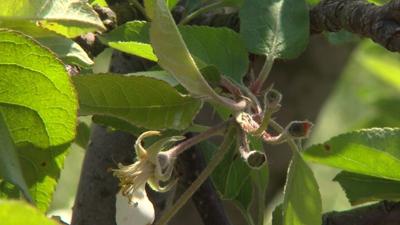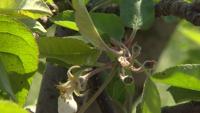COBDEN (WSIL) -- The cold start Wednesday morning had many out early, checking their crops.
"In order to gain full size of fruit, we actually have to go through and thin. So it's okay if we loose a little bit, but there's a fine line there to where if you lose too many, you're starting to get into your overall yield."
Parker Flamm, Field Operations Manager at Flamm Orchards, says he was anxious to check on his orchard Wednesday morning, after temperatures dropped near freezing. Fortunately their peaches and strawberries seemed untouched, but that wasn't entirely the case for their apples.
"We came to our apples, and on the higher ridges, they seem to be fine, but in the lower-lying areas, they got hit pretty hard."
On mornings like these, the coldest air will typically sink into low-lying valleys. Flamm says that is likely what got some of his apple trees.
"We tend to focus on our lower-lying orchards, such as this one."
It only takes a couple seconds to determine if a bloom has been affected.
"You approach the bud, and if you cut it open, you can actually see where the seeds are starting to form within the apple bud."
Flamm says a flash of green is a sign of life, while a dark brown or black signifies a damaged bud.
"You see how that's brown right there? That means that it's dead."
Overall, Flamm says he's optimistic about the size of crop that has survived the cold temperatures.
"It's still a little early to tell. I think we're still going to have plenty big of a crop, but you just hate to lose some."
Flamm notes, he's hopeful for this year's crop, as the relatively dry spring has caused less concern for disease than in years past.














